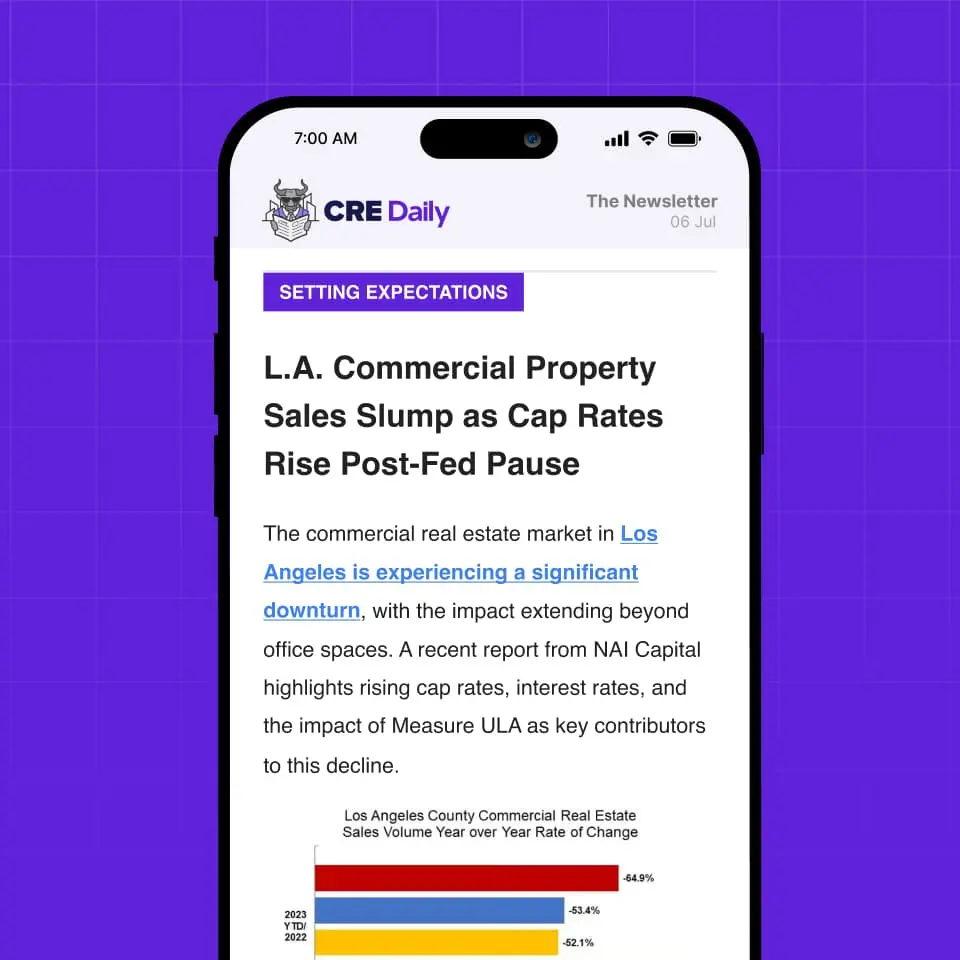- Amazon’s full-time office return policy, announced a year ago, catalyzed a wave of similar mandates from major US employers.rn
- More than half of Fortune 100 companies now require five-day in-office workweeks, compared to just 5% two years ago, per JLL.rn
- Office leasing activity is rising as companies implement stricter attendance rules, though average lease sizes remain smaller than pre-pandemic levels.rn
- Several major corporations — including NBCUniversal, Microsoft, and Starbucks — have recently escalated their return-to-office requirements, some offering exit packages for noncompliant workers.rn
Amazon Opened The Floodgates
When Amazon announced in September 2024 that it would require employees to return to the office five days a week, it signaled a turning point for corporate America. The Seattle-based tech giant became the first major company to fully roll back its remote work policies. A bold move that has since rippled across industries, per CoStar.
Twelve months later, companies from media giants to pharmaceutical firms are revising their in-person work mandates, with many eliminating remote options altogether.
“The primary drivers of leasing activity are corporate confidence and the in-person work behavior of our clients,” BXP CEO Owen Thomas said recently. “Material shifts have undoubtedly augmented leasing activity.”
Return-To-Office Mandates Gain Momentum
According to a recent JLL survey, 55% of Fortune 100 companies now require employees to work in-office five days a week. That’s a sharp increase from just 5% in 2021. Meanwhile, only 1% still allow fully remote work — a significant drop from the early days of the pandemic.
Though 35% of employees still work from home at least one day a week, that figure is expected to fall further as new mandates take effect in early 2026.
Get Smarter about what matters in CRE
Stay ahead of trends in commercial real estate with CRE Daily – the free newsletter delivering everything you need to start your day in just 5-minutes
Office Market Response: Leasing Rises, But Space Remains
The first quarter of 2025 saw the highest volume of office leasing since 2019, but deals are generally smaller than before the pandemic. National vacancy rates remain historically high, sitting at 14.1%, according to CoStar.
Phil Mobley, CoStar’s national director of office analytics, said the real impact will come when previously remote workers are called back. At that point, companies may need to secure additional space to accommodate them.
Major Employers Follow Amazon’s Lead
Since Amazon reinstated a full-time in-office workweek in 2024, several major corporations have introduced similar — and in some cases, stricter — return-to-office mandates. Here’s how some of the country’s biggest employers are responding:
NBCUniversal will require hybrid employees to be in-office four days a week starting January 2026. Those unwilling to comply can take a voluntary exit package.
Paramount Skydance, following its merger, is mandating five days in-office at its New York and Los Angeles hubs. Employees can opt into severance if they choose not to return.
Microsoft begins a phased mandate in February 2026 requiring employees living within 50 miles of an office to be onsite at least three days weekly.
Novo Nordisk will implement a five-day in-office policy globally in January 2026, citing improved collaboration and decision-making.
Starbucks bumps its office requirement to four days per week starting October 2025 and is asking remote support staff to relocate to Seattle or Toronto.
Target now requires merchandising employees to be in-office three days weekly, with flexibility left to team leaders.
Why It Matters
For landlords, developers, and investors, the shift back to in-person work is critical to the recovery of the office market. While leasing demand has improved, it’s largely being driven by renewed in-office mandates. Further recovery may depend on more companies phasing out remote-first models.
According to CoStar and Savills, a return to larger leases could follow, especially if firms begin rehiring or expanding office-based teams.
What’s Next
As we approach 2026, expect more companies to tighten their return-to-office rules. With exit incentives replacing flexible work arrangements, the balance of power has shifted back toward employers. This shift could reshape office demand, urban planning, and corporate culture for years to come.
















